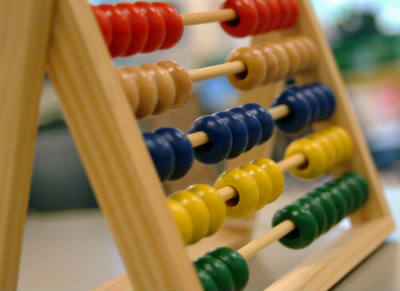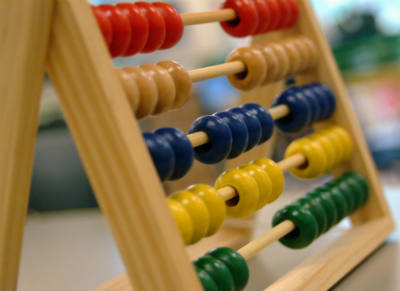When you give your preschooler a foundation in math, you are setting the stage for success in school, especially important since math is becoming increasingly important in elementary school curriculums. Fortunately, math readiness skills can be presented in a fun way, which means you can tap into your child’s enthusiasm for exploring the world around him or her. Here are five things you can do at home to help your child understand math.
#1 Make Sense Out of Numbers
At article found in GetReadyToRead.org offers math readiness suggestions, including counting items of food. How many raisins, for example, did you give your preschooler? Baby carrots? You can also use a calendar to help your child count the numbers of days until a fun day arrives, such as a birthday, a visit with his or her grandparents and the like.
You can also practice basic addition with blocks. Then try subtraction with them. You can also teach counting by playing games that involve rolling dice and then moving markers that number of spaces around the board.
#2 Make Sense out of Shapes
The same article offers tips to teach the basics of geometry. You can simply lay out cookie cutters that are in the shapes of circles, squares, stars and the like, and then ask your preschooler to identify each shape. You can then take the cookie cutters and put them into a shape (perhaps a triangle) and ask your child about what you’ve created. (And, although this doesn’t necessarily have anything to do with geometry, you can also play basic matching games with cookie cutters.)
#3 Use Math Words
The University of Wisconsin offers the next two suggestions, sharing how you can use math words to describe objects around your house. “This ball is small” or “This box is heavy” teaches concepts that will be useful later. You can also make two piles of objects, perhaps blocks or cards or grapes, and ask your child to decide which pile has more objects. Which one, then, has fewer ones? Also teach the concept of “equal” by sometimes having the same number of objects in each pile.
#4 Signs, Signs, Everywhere a Sign
When you go for a walk with your child, point out the shapes and sizes of signs, as well as the numbers in their addresses. “Look how big that sign is! And see how it uses the number one twice: 1-1-3-6.”
When you’re in the grocery store, show how there are numbers on the signs and explain that these numbers help you to know how much something costs; on the boxes, other numbers indicate how many ounces are included.
#5 Math in the Kitchen
The Association for Library Service to Children (ALSC) reports on how families can incorporate math concepts into everyday activities, such as when making Rice Krispie treats together. Using a recipe, the parents and children can count the number of cups of cereal they measure, as well as how many cups there are when they add cereal to the bowl. Parents can also compare quantities and otherwise do math calculations during cooking time together.
This article also confirms that, yes, parents and other adults can make a significant impact on the math readiness of young children. Parents, their study showed, vary in the amount of math talk they share at home. Not surprisingly, the more that parents talk about numbers in connection with solid objects that children can see, the more likely it is that the children will have more advanced knowledge about numbers. That just makes sense—so we encourage you to incorporate numbers knowledge into your everyday lives in a fun way. The rewards in terms of math readiness can be great!




